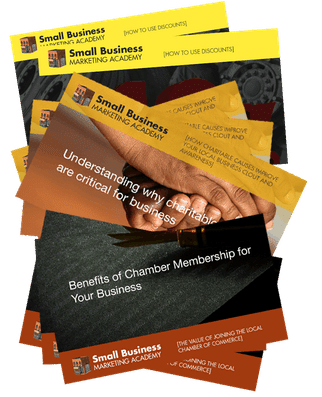

- Directory
- Recent
-
Featured
-
Featured
- Recent
-
- Training
- Programs
- Digital Nomad
- Side Gigs
- Resources
Select Page
10 people find this post amazing!

What is Search Engine Marketing (SEM)? You will learn everything you need to know about Search Engine Marketing as you get started by watching this video. It is a basic Search Engine Marketing Tutorial for Beginners for 2020. If you have ever wondered the difference between SEO and SEM, why you should create SEM campaigns, and some of the top Search Engine Marketing channels and platforms, you will find all of that information here.
Traditional advertising broadcasts a message to the world at large. But search engine marketing targets a very specific group of people – those actively looking for your products and services.
Researching your competitors doesn’t have to be daunting. There are plenty of tools to help scale your competition and estimate your cost-per-click (CPC). My favorite tool is the Google Keyword Planner. Simply enter the keywords you’ll be targeting, and any other target specifications and click Get Search Volume.
In the example below, the keyword “tennis shoes” has roughly 49,500 average searchers per month and the suggested bid is $1.01. We also see that 14.5 percent of “tennis shoes” traffic comes from California.
If you want to dive even deeper into your competitor’s strategy, you can. The tools and services that allow you to explore the back end of your competitor’s SEM strategy are endless. SEMrush, in particular, is great for finding the search terms your competitors are targeting. You can also preview the ads they’re using for each keyword. Many other useful tools are out there, so search around, and use the ones that benefit your SEM strategy the most.
The key to a successful SEM campaign is targeting very specific keywords. In our “tennis shoes” example, you can get even more specific and target “women’s tennis shoes” or “men’s tennis shoes.” Or, if your brand already has a healthy search volume, you can target keywords like “brand name tennis shoes” or “brand name men’s tennis shoes.” The more specific, the more relevant, and the more congruent your keywords are with the ad copy, the cheaper your CPC will be.
Experiment with a handful of high-volume keywords to start. List them out, and make sure they all have relevant ads and landing pages to accommodate them. Here is an example of how we could test keywords for a business that sells tennis shoes for men, women, and kids.
Before you launch a campaign, make sure to set up conversions. Establish what you want to track (sales, sign-ups, etc.), and get the Google AdWords conversion tag copied to the page you want to track. To make sure you’re tracking conversions, go to the Tools tab, and select Conversions. If the Tracking Status reads “Recording conversions,” you’ll know you’re tracking correctly.
You’ll also want to decide on your daily and monthly budget. Your budget depends greatly on your industry, so start with an SEM test budget you’re comfortable with. If your campaign is significantly limited by budget, you’ll see the status “Limited by budget” next to your campaign. Click on the icon next to this status, and you’ll see a suggested budget based on your keywords and can adjust accordingly.
If you’re seeing poor performance right from the start, it’s likely your campaign just needs a little TLC. Monitoring your performance daily, weekly, and monthly is critical in order to start seeing a return on your investment. Your secret weapon is the Search terms report. You can Search Engine Marketing use the Search terms report to see the actual searches that triggered your ads and to find common trends. For instance, maybe you got a lot of clicks from the keyword “high-quality women’s tennis shoes.” If so, you’ll want to add this keyword as an exact match, because adding more high-volume exact match phrases will lower your CPC.
Monitoring performance allows you to zero in on the search terms that are not converting and costing you money. When you find them, you’ll want to add these terms as negative keywords. Negative keywords are terms that are irrelevant to your product or service and can be added at the account, campaign, and ad group level. For the first month, keep an eye on this report daily, and make adjustments accordingly.
You’ll also want to monitor your bids. Make sure your budget is being allocated to a number of different keywords when you’re starting out. If you’re bidding too high on one keyword, it can take the majority of your budget and leave nothing left over for other potentially profitable terms.
Unfortunately, there’s no sure solution to determine whether the paid search is right for your business. Your best bet is to research, test, re-test, and then make a decision based on your findings.
If your landing pages, campaigns, and keywords are fully optimized, and you’re following best practices and you’re still not seeing the return you would like, it might be time to explore cheaper search terms. For many startups and small businesses with a lot of competition from Search Engine Marketing top brands with high budgets, SEM can seem like a lost cause. Your key to success, however, is to test and re-test for relevant and specific keywords. After two or three months of testing, you should have a clearer picture of whether or not a paid search is a gain or loss for your business goals.
“Today it’s not about ‘get the traffic’ — it’s about ‘get the targeted and relevant traffic.” – Adam Audette
“Google only loves you when everyone else loves you first.” –Wendy Piersall
“The ultimate search engine would basically understand everything in the world, and it would always give you the right thing. And we’re a long, long ways from that.” – Larry Page
“Content is the reason search began in the first place.” — Lee Odden
Learn More about Crucial Construct Academy: Click Here Now!
Learn More about the Academy here: Click Here Now!
The Crucial Constructs Academy is a Free Video Training Course Available only to our Readers and Subscribers. A thorough and detailed training available to you. Find out more about it here. Click and Learn
Table of Contents

Achieve Your Goals Now!
